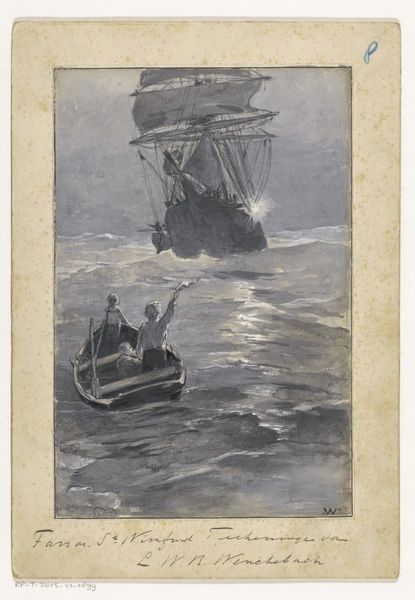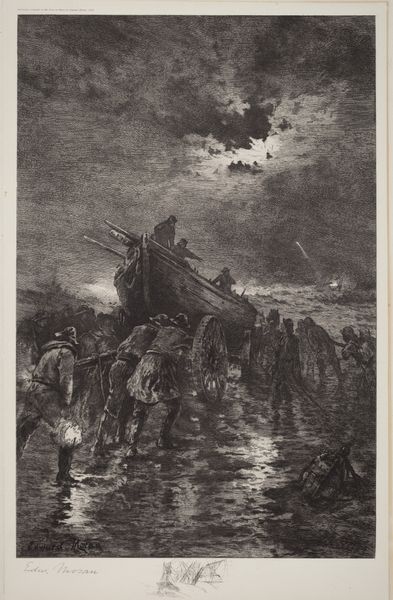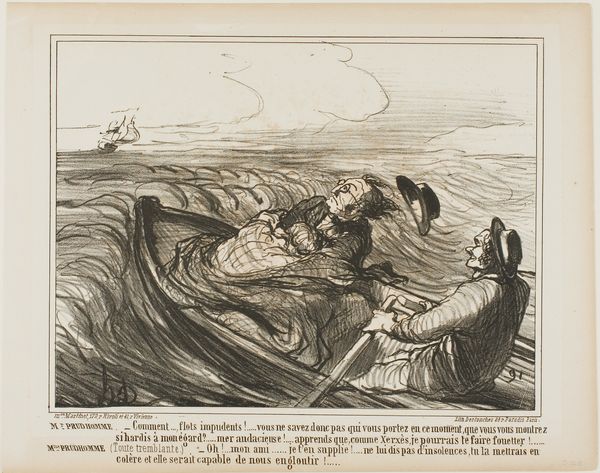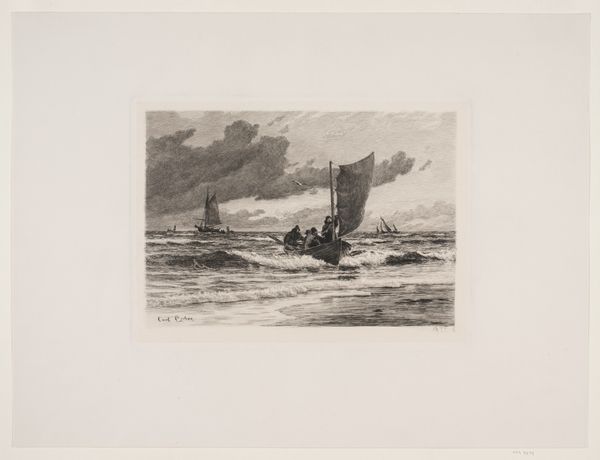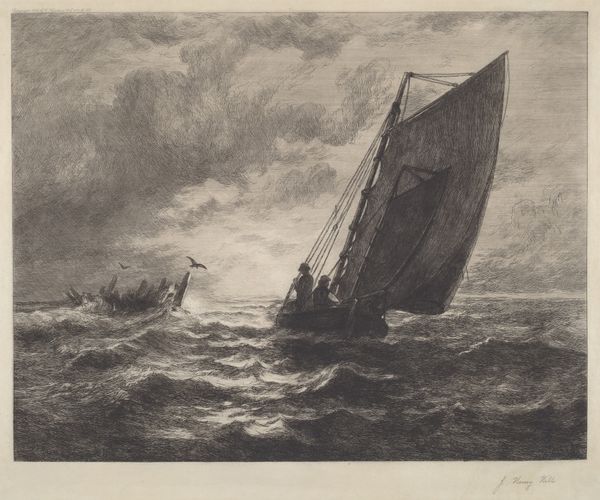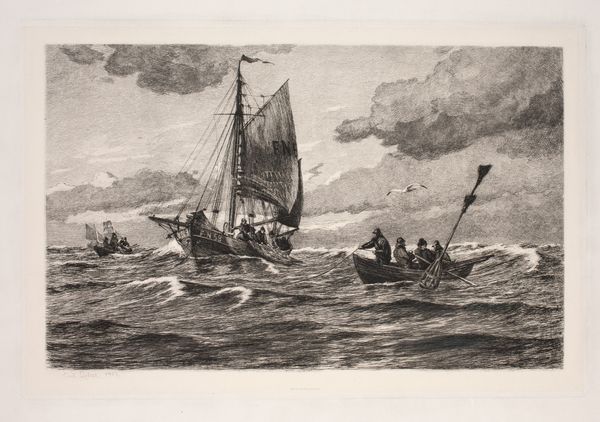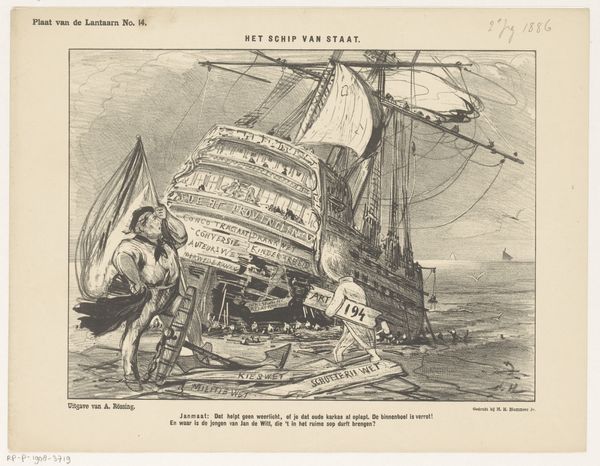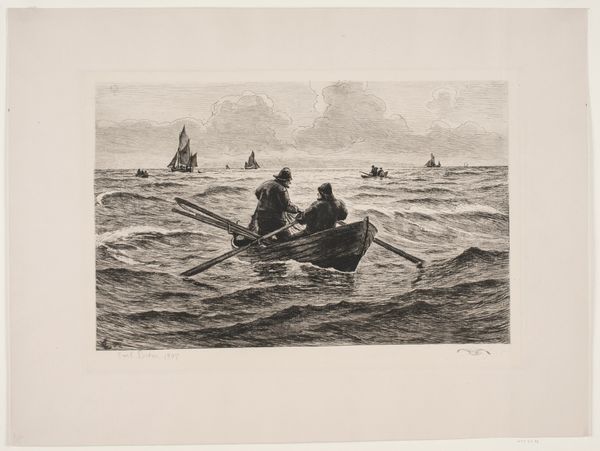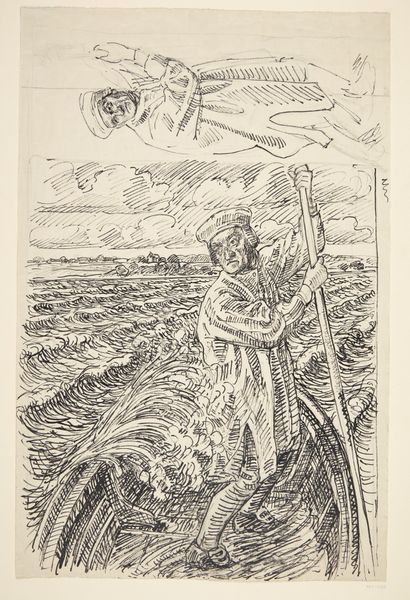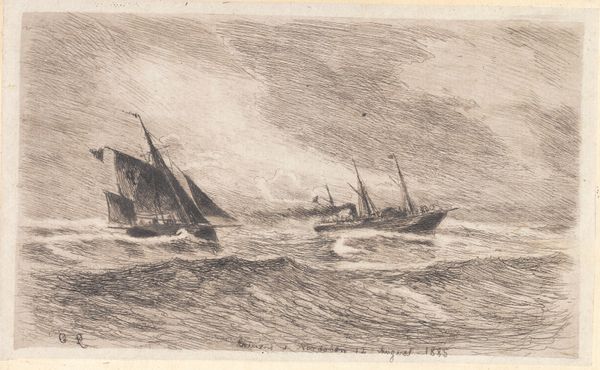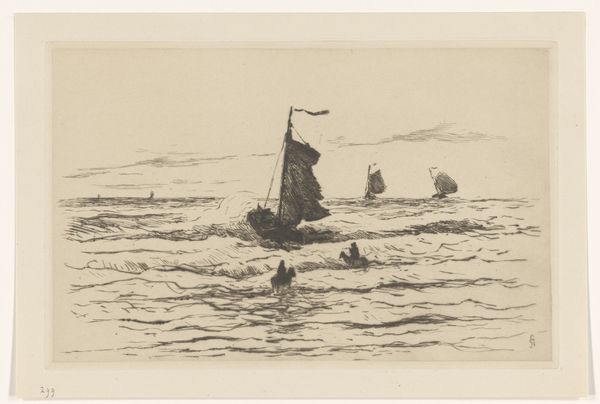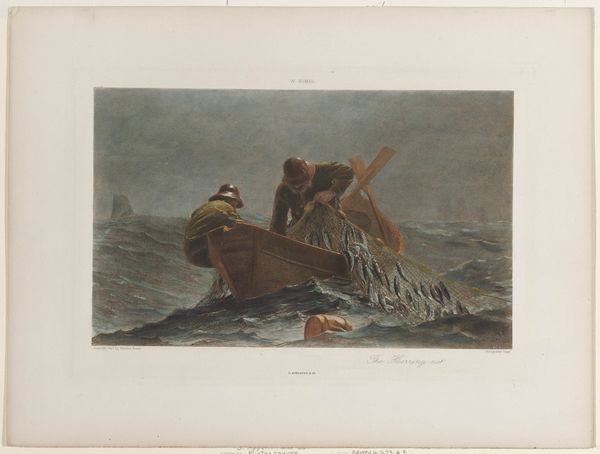
print, etching, engraving
#
narrative-art
# print
#
etching
#
caricature
#
old engraving style
#
landscape
#
engraving
Dimensions: height 335 mm, width 226 mm
Copyright: Rijks Museum: Open Domain
Curator: This 1887 print by Jan Holswilder, titled "Spotprent met een boot op zee in noodweer," presents quite a dramatic scene. It utilizes engraving and etching techniques. Editor: The initial impression is quite unsettling. The high contrast etching evokes a sense of turbulent anxiety; the textures within the wave formations alone are extremely active. Curator: Indeed. Holswilder's use of line and form emphasizes the precariousness of the vessel. Observe how the diagonal thrust of the ship contrasts sharply with the more static, vertical form of what appears to be a lighthouse, crowned with a somewhat satirical figure. Note also that the sea throws a lot of timber debris and parts of the ship at the beholder. Editor: Placing the oversized lighthouse head with the small ship establishes a power dynamic; the image speaks volumes about power, navigation, and perhaps a touch of national identity through its possible reference to naval history. Are we looking at allegory? Curator: It seems likely. Given the inscription "Tromp Zeilt Uit", coupled with the floundering vessel, and what appear to be textual fragments representing, Gierke, Leerling, KIP, possibly these are commentaries on maritime policy? There's a deliberate interplay between text and image typical of caricature, using the formal language of marine painting. Also, the inscription on a cloud reminds one of national economics, as "Begrooting Marine" seems to indicate the importance of military spending for the defense of a nation at war. Editor: I wonder about its audience. Caricature serves a critical social function. It has to be clear in its symbolism, otherwise, its message and socio-political commentary would be totally ineffective, though what feels effective depends entirely on who the viewer is. Curator: Precisely. Holswilder has used his artistic ability to address critical social subjects during that time through parody; very accessible, formally economical with striking visuals. Editor: So in terms of visual language and historical context, we can appreciate the work as both aesthetically compelling and politically charged. Thank you for lending clarity and direction. Curator: The pleasure was mine. Viewing the artwork now through both interpretive frameworks really deepens the experience for me as well.
Comments
No comments
Be the first to comment and join the conversation on the ultimate creative platform.
